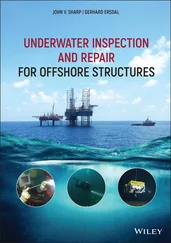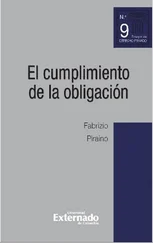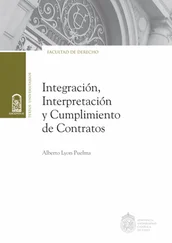1 Cover
2 List of Figures
3 List of Tables
4 Foreword by Professor Purnendu K. Das Foreword by Professor Purnendu K. Das Advances in technology and industry maturity make offshore wind an increasingly attractive investment. Although still relatively expensive, it has advantages of being deployable sooner and faster than many other nonrenewable energy sources. Compared to other renewable sources, offshore wind turbine technology has advantages in scalability. Recent growth and innovation have driven costs to more competitive levels and significant future investments in Europe and globally. Current drawbacks include high capital costs due to the large fabrication, installation, and maintenance costs involved; it is estimated that over 20% of total project costs are directly linked to the foundation structures and their construction. The book describes the detailed analysis and design procedures of compliant offshore structures with a special focus on new‐generation platforms like the triceratops and buoyant leg storage and re‐gasification platforms. The book aims to describe the detailed preliminary design of a triceratops in ultra‐deep water. A detailed analysis under environmental loads that are inherent in offshore locations, such as waves, wind, and currents, is presented. A new methodology for the dynamic analysis of a triceratops under ice loads, predominantly in ice‐covered regions, is also explained, with detailed parametric studies. Because offshore platforms are also prone to accidental loads arising due to fires and ship–platform collisions, the detailed dynamic analysis under such loads discussed in the book will be of great assistance to both researchers and practicing structural consultants. I hope this book will serve as a ready reference for engineers in this field who want to study floating wind turbines structures. I wish the book all success. Professor Purnendu K. Das B.E., M.E., Ph.D., C.Eng, CMar.Eng, FRINA, FIStruct.E, FIMarEST Director ASRANet Ltd. Glasgow Ex‐Professor of Marine Structures, University of Strathclyde, Glasgow, UK Visiting Professor, University of Montenegro, Montenegro
5 Foreword by Dr. Atmanand N.D.
6 Series Preface
7 Preface
8 1 Common Compliant Platforms 1.1 Introduction 1.2 Tension Leg Platforms 1.3 Guyed Tower and Articulated Tower 1.4 Floating Structures 1.5 Response Control Strategies 1.6 Tuned Mass Dampers 1.7 Response Control of Offshore Structures 1.8 Response Control of TLPs Using TMDs: Experimental Investigations 1.9 Articulated Towers 1.10 Response Control of ATs: Analytical Studies 1.11 Response Control of ATs: Experimental Studies
9 2 Buoyant Leg Storage and Regasification Platforms 2.1 Background Literature 2.2 Experimental Setup 2.3 Experimental Investigations 2.4 Numerical Studies 2.5 Critical Observations 2.6 Stability Analysis of the BLSRP 2.7 Fatigue Analysis of the BLSRP
10 3 New‐Generation Platforms: Offshore Triceratops 3.1 Introduction 3.2 Environmental Loads 3.3 Fatigue Analysis of Tethers 3.4 Response to Regular Waves 3.5 Response to Random Waves 3.6 Response to Combined Actions of Wind, Waves, and Current 3.7 Summary
11 4 Triceratops Under Special Loads 4.1 Introduction 4.2 Continuous Ice Crushing 4.3 Response to Continuous Ice Crushing 4.4 Response to Impact Loads 4.5 Deck Response to Hydrocarbon Fires 4.6 Summary
12 5 Offshore Triceratops: Recent Advanced Applications 5.1 Introduction 5.2 Wind Turbines 5.3 Wind Power 5.4 Evolution of Wind Turbines 5.5 Conceptual Development of the Triceratops‐Based Wind Turbine 5.6 Support Systems for Wind Turbines 5.7 Wind Turbine on a Triceratops 5.8 Response of a Triceratops‐Based Wind Turbine to Waves 5.9 Stiffened Triceratops 5.10 Triceratops with Elliptical Buoyant Legs 5.11 Summary
13 Model Exam Paper 1
14 Model Exam Paper 1: KEY
15 Model Exam Paper 2
16 Model Exam Paper 2: KEY
17 Model Exam Paper 3
18 Model Exam Paper 3: KEY
19 References
20 Index
21 End User License Agreement
1 Chapter 1 Table 1.1 Major fixed platforms constructed worldwide (as of 2017).Table 1.2 Tension leg platforms constructed worldwide.Table 1.3 Properties of a TMD in the model and prototype (scale 1 : 100).Table 1.4 Results of free oscillation tests of the TLP model.Table 1.5 RMS value of surge responses in the presence of random waves.Table 1.6 RMS value of pitch responses in the presence of random waves.Table 1.7 Mechanical properties of the Perspex material used for the model.
2 Chapter 2Table 2.1 Structural details of the BLSRP.Table 2.2 Natural periods and damping ratios.Table 2.3 Maximum response of the BLSRP model (0°, 0.1 m).Table 2.4 Maximum response amplitudes (numerical studies; 6 m wave height).Table 2.5 Geometric properties of the BLSRP for the stability study.Table 2.6 Maximum tension amplitude in the tethers in postulated failure case...Table 2.7 Mathieu parameters in postulated failure cases.Table 2.8 Fatigue life (rounded off) of tethers under eccentric loading.
3 Chapter 3Table 3.1 Characteristics of random sea conditions.Table 3.2 Comparison of responses to regular waves.Table 3.3 Deck response to different sea conditions.Table 3.4 Comparison of deck responses to high sea conditions.Table 3.5 Tension variation and service life of tethers of buoyant leg 1.Table 3.6 Characteristics of sea conditions (Jain and Chandrasekaran 2004).Table 3.7 Tether tension variation with combined actions of wind, waves, and ...
4 Chapter 4Table 4.1 Mechanical properties of marine DH36 steel (Cho et al. 2015).Table 4.2 Ice sea conditions.Table 4.3 Deck response to different sea conditions.Table 4.4 Deck response to open water and ice‐covered load cases.Table 4.5 Collision speed and impact duration (Syngellakis and Balaji 1989).Table 4.6 Mechanical properties of DH36 steel at a 0.001/s strain rate (Kim e...
5 Chapter 5Table 5.1 Properties of the triceratops‐based wind turbine.Table 5.2 Variation in RAO with changes in the wave heading angle.Table 5.3 Service life estimation of the triceratops.Table 5.4 Geometric parameters of the offshore triceratops.Table 5.5 Mass properties of the triceratops.Table 5.6 Response of the triceratops given rough sea conditions.
1 Chapter 1 Figure 1.1 A typical tension leg platform. Figure 1.2 TLP mechanics.Figure 1.3 Active control strategy.Figure 1.4 Semi‐active control strategy.Figure 1.5 Block diagram for passive control strategy.Figure 1.6 Pall friction damper.Figure 1.7 Metallic yield damper.Figure 1.8 Viscous fluid damper.Figure 1.9 Tuned liquid damper: (a) circular; (b) rectangular.Figure 1.10 Tuned liquid column damper.Figure 1.11 Tuned mass damper.Figure 1.12 Schematic diagram of an idealized system.Figure 1.13 Schematic diagram of a spring‐mass system with a TMD.Figure 1.14 Mass used in the TMD.Figure 1.15 Response of a TLP and TMD (μ = 1.5%).Figure 1.16 Response of a TLP and TMD (μ = 3.0%).Figure 1.17 Surge RAO of a TMD.Figure 1.18 Comparison of surge response (H S= 8 m; T P= 12 seconds).Figure 1.19 Comparison of surge response (H S= 8 m; T P= 16 seconds).Figure 1.20 Comparison of surge response (H S= 8 m; T P= 20 seconds).Figure 1.21 Comparison of surge response (H S= 8 m; T P= 32.5 seconds).Figure 1.22 Comparison of pitch response (H S= 8 m; T P= 12 seconds).Figure 1.23 Comparison of pitch response (H S= 8 m; T P= 16 seconds).Figure 1.24 Comparison of pitch response (H S= 8 m; T P= 20 seconds).Figure 1.25 Comparison of pitch response (H S= 8 m; T P= 32.5 seconds).Figure 1.26 Articulated tower.Figure 1.27 Analytical model.Figure 1.28 Variation of responses for different frequency ratios.Figure 1.29 Variation of responses for different frequency ratios with a TMD...Figure 1.30 Variation of responses for different frequency and mass ratios w...Figure 1.31 Geometric details of the model.Figure 1.32 Model of a TMD.Figure 1.33 Free‐vibration time history.Figure 1.34 Surge response of a MLAT without a TMD.Figure 1.35 Surge RAO for TMD‐1.Figure 1.36 Surge RAO for TMD‐2.Figure 1.37 Surge RAO for TMD‐3.Figure 1.38 Comparison of RAOs for 3 cm wave height.Figure 1.39 Comparison of RAOs for 5 cm wave height.Figure 1.40 Comparison of RAOs for 7 cm wave height.
Читать дальше












